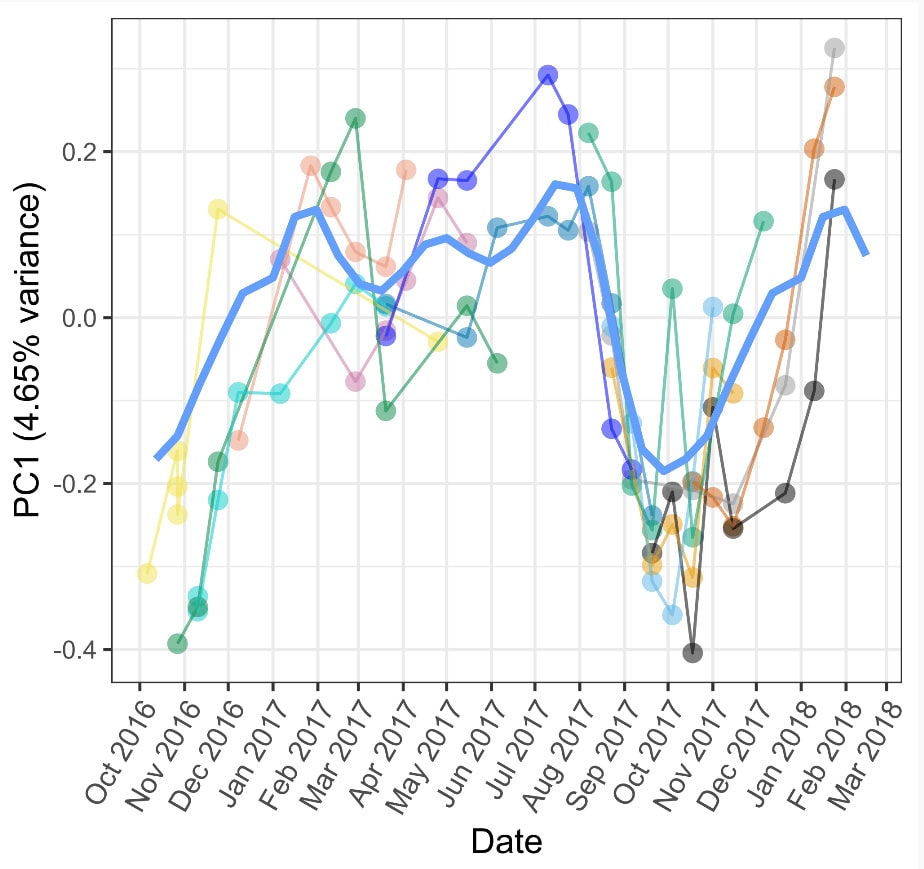
Drivers of microbiome variation
Among individual variation
Within a population, individuals usually show marked differences in their microbiota, and these are often repeatable over time – the microbiota can be highly individualised. But to what extent are such differences determined by host genetics or persistent environmental influences? Studies on human twins and lab animal have demonstrated that host genetics can influence the microbiome, indicating at least some host genetic control over the microbiome. But we still know little about the microbiome’s heritability in wild animals. As part of an ERC-funded project, we will be exploring the genetic basis of gut microbiome traits in a wild house mouse system. Ongoing work in wild mice is also examining how a host’s environment (e.g. diet, habitat) and behaviour (e.g. ranging and movement) shape the microbiome.
Within-individual dynamics
An individual’s microbiome is far from static, with communities displaying dynamics over a range of timescales – from fairly predictable changes that occur with age, through daily circadian rhythms, to stochastic changes without obvious external drivers. While studies in humans suggest the gut microbiome is fairly stable by adulthood, research in wild animals, including our own on seasonal turnover in the wild mouse microbiome (Figure 1), suggest that the microbiome in wild animals may be far more dynamic and environmentally responsive. Using longitudinal studies of individually marked wild mice, and new rodent trapping technology we have recently developed, we are investigating the drivers of within-host dynamics at a range of timescales, and their implications for the host.
Figure 1: Seasonal restructuring of the gut microbiome in the wood mice of Wytham Woods

Each coloured line represents repeat samples from an individual mouse, the blue line shows the population mean, and the y-axis shows the major axis of community variation from a principle coordinates analysis.